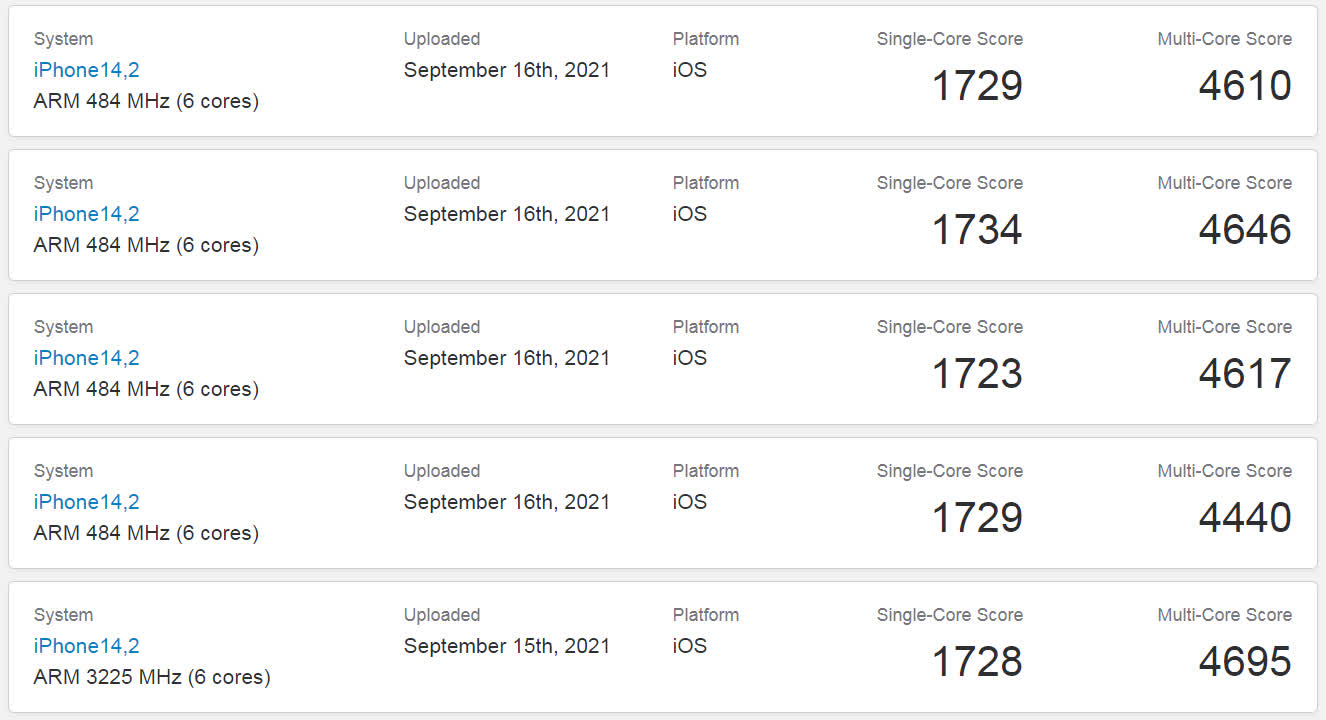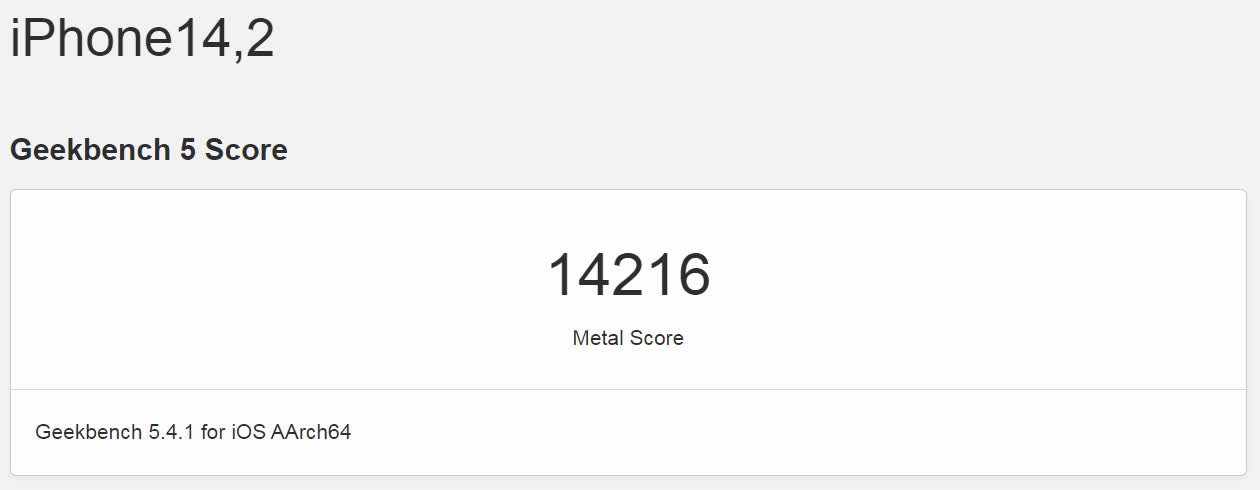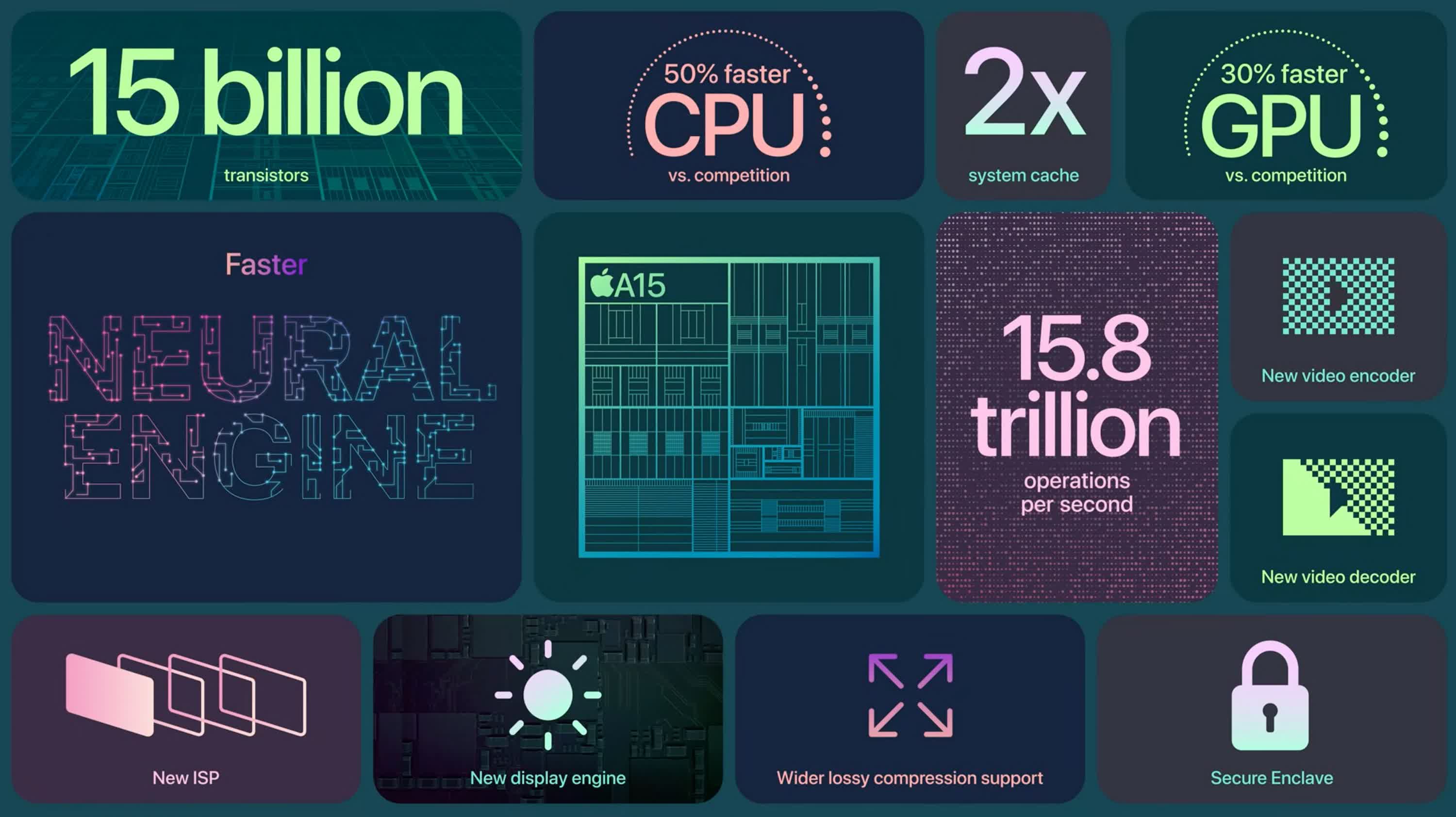The big picture: Early benchmark results from Apple's new iPhone 13 family have started to hit the web, painting a clearer picture of the sort of performance improvement that you can expect from the A15 Bionic. Keep in mind that this is a small sample set, and that averages will start to solidify as more results are added to the database in the coming days and weeks.
Apple earlier this week took the wraps off its new iPhone 13 family of smartphones. Astute viewers may have noticed that when Apple spoke of the new A15 Bionic SoC powering the phones, the company's message deviated from the norm.
Rather than stating how much faster the chip was compared to its predecessor, Apple instead noted how the competition "is still playing catch up to our chips. Not just from last year, but from two years ago."
There are a couple of prevailing theories as to why Apple modified its message, and all of them could be accurate to a certain degree. But with samples presumably having been seeded to reviewers this week, we're starting to see benchmark results hit the Internet to help clear up any confusion.

Over on Geekbench where benchmark results are starting to congregate, we see that the A15 Bionic in the iPhone 13 is turning in an average single-core score of around 1725 and multi-core scores of roughly 4600.
As MacRumors highlights, the scores represent a roughly 10 percent increase on the single-core side and an 18 percent increase in multi-core performance compared to the A14 Bionic in last year's iPhone 12.

Looking at the graphics subsystem, we see that the four-core GPU in the non-Pro models turned in a score of 10608, which is about 15 percent higher than the A14 Bionic. The iPhone 13 Pro, which packs one additional GPU core, turned in a score of 14216, which is roughly 55 percent higher than what the iPhone 12 Pro is capable of.
